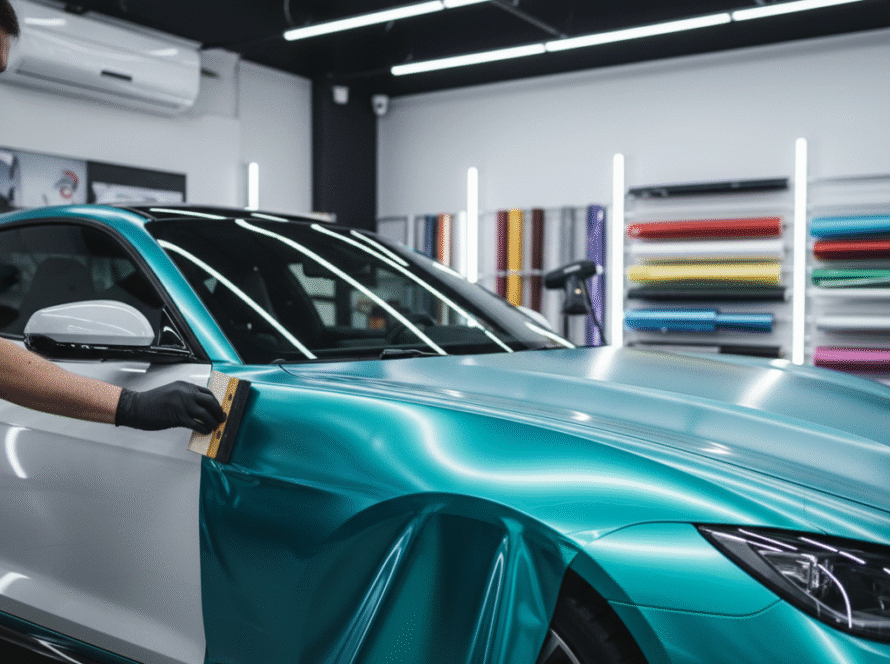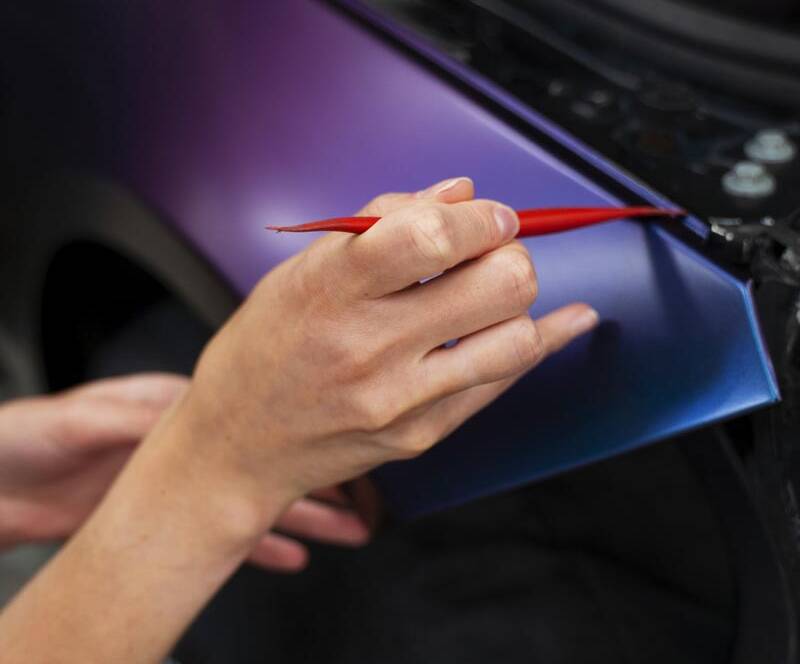The Core Difference (Impact vs. Chemical Defense)
PPF vs Ceramic Coating is the debate most Canberra owners face when they want long-lasting protection and showroom gloss. Both solutions protect paint, but they work in fundamentally different ways that affect cost, maintenance, and outcomes.
What each option actually does
Paint Protection Film (PPF) is a thick, elastomeric urethane that absorbs the energy from stone strikes and minor abrasions, preventing those marks from reaching your clear coat. Ceramic coatings, by contrast, are ultra-thin hardened layers that crosslink to paint; they deliver strong chemical resistance and slick hydrophobics, so grime releases faster and the finish stays glossy with fewer wash-induced swirls. If you’re aiming for Best car protection Canberra outcomes, the first step is to match the protection to the real risks your car faces: impact (chips, scuffs) or contamination (bug guts, sap, road film).
Side-by-Side: How They Compare in Real Life
When you compare PPF vs Ceramic Coating, think of PPF as the “impact shield” and coating as the “maintenance amplifier.”
PPF: the physical barrier
- Impact protection: Great at absorbing stone chips and resisting localized scratches.
- Finish preservation: Self-healing top coats can clear minor wash marks with heat.
- Where it shines: Highway commuters, gravel-road drivers, low-clearance vehicles, and fresh resprays.
Curious about the material itself? See the overview: What is Paint Protection Film?. This helps set expectations about thickness, self-healing, and edge behavior.
Ceramic coating: the chemical defender
- Chemical resistance: Slows etching from bird lime, bugs, and harsh cleaners.
- Hydrophobics & gloss: Easier washing, tighter water beading, and richer paint depth.
- Where it shines: Daily drivers seeking low-effort cleanliness and long-term gloss.
In short, Car paint protection film tackles physical insult, while coatings minimize chemical wear and speed up maintenance. If you prize appearances and time savings, coatings deliver a compelling value; if you fear road rash, PPF is a must. For Best car protection Canberra strategies, many owners mix both for targeted gains.
Choosing the Right Fit for Your Driving & Budget
Your decision on PPF vs Ceramic Coating should reflect how and where you drive, how long you’ll keep the car, and your tolerance for maintenance.
Three quick profiles
- Highway heavy-miler: PPF on the front clip (bumper, bonnet, guards, mirrors). Ceramic elsewhere for chemical defense and gloss.
- Urban daily driver: Full-body coating for easy washes; optional PPF on door edges and handles to stop micro-nicks.
- Weekend keeper/collector: Enhanced paint correction, selected PPF on high-risk panels, premium coating for the ultimate finish.
Want a deeper look at specifications, coverage maps, and film options? Explore the studio’s Canberra-specific menu here: See Our Paint Protection Film Services. This page explains how Car paint protection film is cut and wrapped around panels for a near-invisible fit, along with pricing tiers and warranty notes. And if your priority is a fast, consistent wash process, remember that coatings can still be your Best car protection Canberra choice when most miles are in town.
Durability, Maintenance & Total Cost of Ownership
Let’s compare longevity and upkeep for PPF vs Ceramic Coating so you can forecast cost over the next 3–5 years.
Lifespan & warranties
- PPF: Often warrantied for many years; resists yellowing and cracking with quality brands and proper maintenance. Impact damage may require film replacement on that panel, which is far cheaper than repainting.
- Ceramic coating: Multi-year durability when properly maintained; hydrophobics can be revitalized with compatible toppers.
Maintenance rhythm
- With PPF: Gentle wash routine, avoid aggressive edging with pressure washers, and use film-safe chemicals.
- With coating: Two-bucket wash, pH-balanced shampoo, top up hydrophobics periodically. Excellent for time-poor owners who want a quick “rinse-and-light-contact” routine.
If your metric is “least time to great results,” coatings often win pure convenience, while film wins on sacrificial strength. Canberra’s climate (UV, frost, dust) makes both viable, but the Best car protection Canberra will depend on your routes, parking, and how immaculate you want the finish to stay day-to-day.
The Smart Play: Combining Film + Coating for Maximum Results
The best answer to PPF vs Ceramic Coating is often “both”—applied with intent.
The winning stack
- PPF where impact risk is highest: Front bumper, bonnet, guards, mirror caps, door cups/edges, sills.
- Ceramic coating everywhere (including over film): Adds chemical resistance and slickness, making the protected panels even easier to clean.
This combination keeps the nose chip-free while the rest of the body enjoys effortless washes and optical depth. For Canberra drivers who want the most balanced solution, Car paint protection film plus a quality coating remains the Best car protection Canberra approach—preserving both structure and shine. To plan your package with detail-first technicians, connect with Canberra Auto Detailing PTY LTD via the company site.
Final word (read before you book)
If you value a flawless front end and quick weekly washes, the synergy of targeted film and a pro-grade coating is hard to beat. Make sure your installer conducts proper paint correction, edge wrapping on film, and compatible chemistry for coatings over film. Done this way, PPF vs Ceramic Coating becomes less a dilemma and more a tailored protection system that fits your car, your commute, and your standards.
FAQs
Q1: Does PPF really stop stone chips better than coatings?
Yes. PPF is a thick urethane barrier designed to absorb impacts. Coatings are thin, hard layers built for chemical resistance and easy cleaning, not impact absorption.
Q2: Can I put a ceramic coating on top of PPF?
Absolutely. Coatings add slickness and chemical protection to the film, enhancing gloss and making maintenance faster.
Q3: How do I maintain each solution?
Use a safe wash routine for both. For film: avoid harsh edges with the pressure washer and use film-safe products. For coatings: pH-balanced shampoos and compatible toppers keep hydrophobics lively.
Q4: Which option is easier to live with day-to-day?
Ceramic coatings typically win on wash speed and effort. PPF wins on sacrificial strength against chips and scuffs.
Q5: I’m on a budget—where should I spend first?
Protect high-risk areas with partial-front PPF, then coat the remaining panels. You’ll get the biggest impact-to-cost ratio while still enjoying low-effort maintenance.


